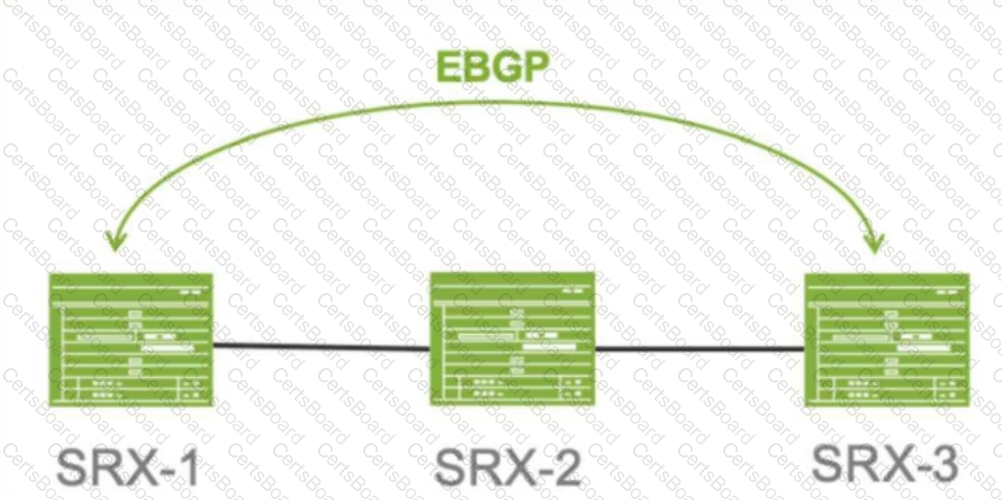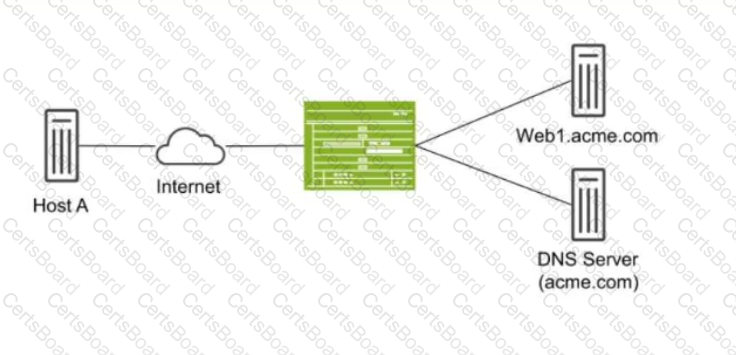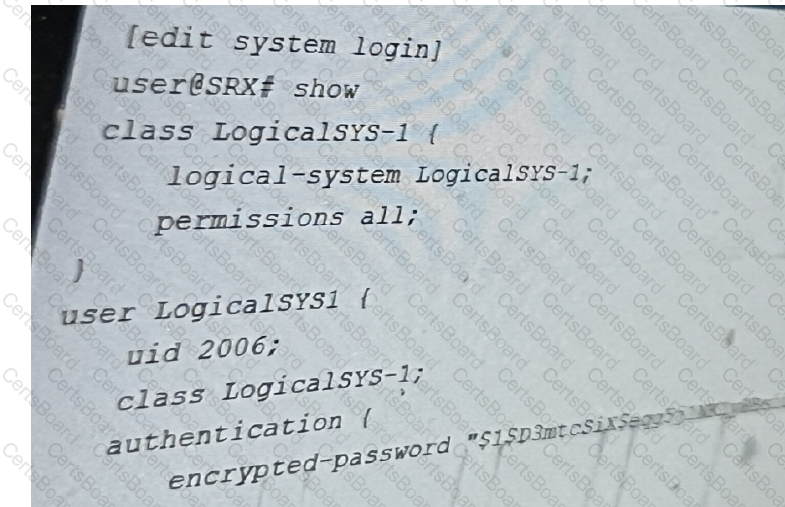You want to create a connection for communication between tenant systems without using physical revenue ports on the SRX Series device.
What are two ways to accomplish this task? (Choose two.)
Click the Exhibit button.

Referring to the exhibit. SRX-1 and SRX-3 have to be connected using EBGP. The BGP configuration on SRX-1 and SRX-3 is verified and correct.
Which configuration on SRX-2 would establish an EBGP connection successfully between SRX-1 and SRX-3?
You have an initial setup of ADVPN with two spokes and a hub. A host at partner Spoke-1 is sending traffic to a host at partner Spoke-2.
In this scenario, which statement is true?
Which two statements about the differences between chassis cluster and multinode HA on
SRX series devices are true? (Choose Two)
Exhibit:

Host A shown in the exhibit is attempting to reach the Web1 webserver, but the connection is failing. Troubleshooting reveals that when Host A attempts to resolve the domain name of the server (web.acme.com), the request is resolved to the private address of the server rather than its public IP.
Which feature would you configure on the SRX Series device to solve this issue?
Referring to the exhibit, you have been assigned the user LogicalSYS1 credentials shown in
the configuration.

In this scenario, which two statements are correct? (Choose two.)
You are asked to establish a hub-and-spoke IPsec VPN using an SRX Series device as the hub. All of the spoke devices are third-party devices.
Which statement is correct in this scenario?
You are deploying threat remediation to endpoints connected through third-party devices.
In this scenario, which three statements are correct? (Choose three.)


